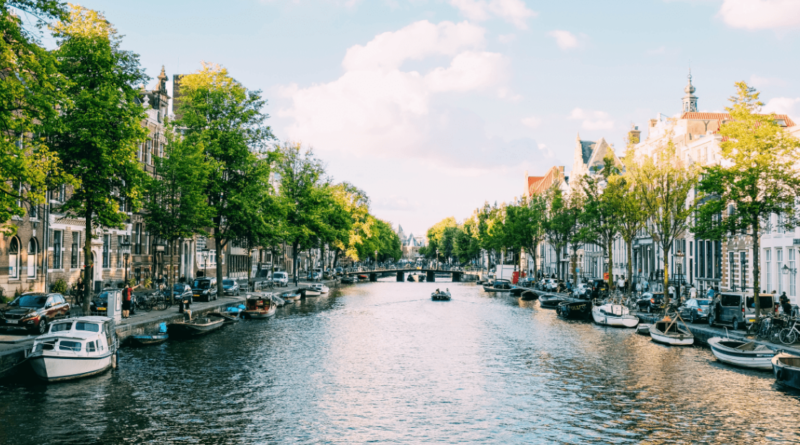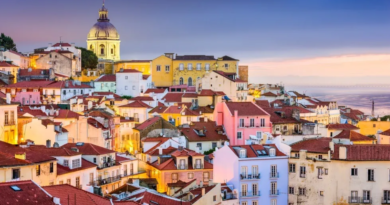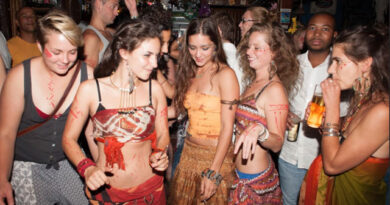When Sarajevo Opened My World
Bosnia, the intersection of Serb, Croat and Muslim Bosniac culture and former vassal to both the Ottoman and Habsburg empires. A nation home to the three aforementioned constituent peoples, who are all reflected in the diversity of its capital Sarajevo. Where a five minute stroll takes you through its old bazaar, breathing in the intoxicating mix of thick brewed coffee and vaporous clouds of shisha against the backdrop of colourful market facades and the peals of minarets. Upon hitting the bank of the river Miljacka, the architecture lurches from Ottoman to Austrian as a former Catholic church stands witness to the site where a Serbian terrorist organisation assassinated Archduke Franz Ferdinand, the ignition point of World War One.
This rich cosmopolitan identity is undercut by the dark history of the Bosnian War of the 1990’s and, I’ll admit it, I was nervous visiting Sarajevo. This wasn’t my usual what happens if I forget my passport jitters. Ignorant of its history I knew next to nothing about Bosnia except that there had been a war their semi-recently. Yet despite the recent atrocities the city’s rich cosmopolitan identity manages to shine through.
Cafe Life and Unexpectedly Fine Dining
Bazaars, countless mosques and the habit of idling away hours behind coffee and conversion, the Ottoman Empire left its mark on Sarajevo during its 500 year occupation of Bosnia. In Baščaršija, the cities equivalent to an old town, vendors hawk trinkets crafted in the artisanal style of Sarajevo’s old guilds, while Bosnian’s enjoy coffee, cards and cigarettes as their parents did before them. While time may not stand still in Sarajevo it certainly slows down as even its Old Clock Tower eschews modern timekeeping, remaining the only public clock operating on lunar time.
Dining in Sarajevo’s old town is both affordable and delicious. Cevapi a traditional sausage served with a slab of bread, tomatoes and onion can be bought for around 6 Bosnian marks or 3€ ( the half price “small” size contains only 5 instead of pieces of Cevapi but the gigantic portion of bread is unchanged). Buregdzinica Bosna sells bureks (traditional stuffed pastry) by the weight for absurd prices (250g-500g should be enough for one, though I will eat a kilo if it’s smothered in garlic yoghurt).
Dining may be simple but Bosnian coffee is more complicated, as I found out when wizened Bosniac approached our seat at the cafe and flourished a large metal džezva (A metal pot Bosnian’s and many others used to cook coffee and yes I googled that) simmering with thick black coffee. I glanced at my girlfriend but before we could ask, our server had vanished behind the haze of her cigarette. “Are we supposed to drink it from here?” My girlfriend said referring to the džezva.”Naaaah I think you’re meant to pour it over this” I said referring to the empty cup nestling a pair of sugar cubes. Fortuitously a walking tour emerged to give a full demonstration and while I’m not going to go into detail as I have absolutely no authority on the matter but you are meant to drink the coffee from the cups with the sugar between your teeth if you like it sweet and stirring the bottom if you want to make it strong. While drinking you are required to remain seated for a good few hours discussing family, politics and everything else, while slowly sinking into the relaxed pace of Bosnian life.
The Cultural Cocktail of Sarajevo
Once Heralded as Europe’s Jerusalem, Sarajevo saw Bosniacs, Serbs and Croats and other ethnicities live side by side. Since the Bosnian War of the 90’s, the country has been redivided along ethnic lines, but its rich cosmopolitan history resonates through the Serbian Orthodox Churches, Catholic Churches, Synagogues and Mosques that line its streets. The old Orthodox Church is one of the oldest remnants of Serbian culture within the city, with its earliest recordings over 500 years ago. While the largest and grandest Gazi Husrev-bey Mosque sits centrally in the old town. Krck house, located not far from the mosque, is a historically preserved Turkish house that gives you a taste of what life under Ottoman rule. And you’ll only ever be sharing this places with no more than a handful of other tourists.
Scars of War and the Siege of Sarajevo
There is much more to Bosnia and Sarajevo than the conflict it’s defined through today, though it’s hard to miss the scars of Sarajevo’s four year long siege. Following the fragmentation of Yugoslavia. Predominantly Serb, Yugoslav forces surrounded Sarajevo attempting to starve out its citizens in the longest siege in modern history. And despite life returning to its capital, Bosnia’s population has still not recovered to its pre-war levels. Lift your gaze from the crowds thronging the city streets and you’ll’ notice the lofty facades of high rise buildings and apartments riven with bullet holes or the even less subtle full blown ruins.
The war’s scars are not just confined to its streets, with pretty much everyone over the age of 20 having some recollection of the tragedy. Bosnian’s are usually warm, friendly and incredibly open to their past, but remember to tread with great sensitivity in this area. While the conflict has ended, ethnic tensions are still palpable as the nation has been redivided along ethnic lines with the nation being split into the predominantly Serb Republika Srpska and the Bosniac and Croat Federation of Bosnia and Herzegovina.
The Bosnian war was only the latest conflict to plunge the tumultuous region. Historically the region has long been contested by both the Ottoman and Austro-Hungarian empire, which explains the distinct clash of Islamic and Western architecture. In 1914 the assassination of Archduke Franz on the banks of the river Miljacka, a short walking distance from Sarajevo’s old town ignited World War One and World War Two saw nazi aligned fascists conduct large-scale executions, targetting the cities Serb, Roma and Jewish populations as well as others.
Museums give a chance to glean this long history. The History Museum of Bosnia and Herzegovina shows what life during the siege was like. While the Sarajevo tunnel museum contains a brief walkable stretch of the tunnel of hope network that was used to smuggle humanitarian aid into the city from the airport. But when I say brief, I mean no more than 10 meters. Coupled with its out of way location I wouldn’t really recommend it. The small Franz Ferdinand museum, which stands opposite the site of his shooting is very small and I wouldn’t it unless you really want to see a replica of the clothes he died in. Most of the information here can easily be found online or even in a book. By far the best way to experience Sarajevo’s story is to walk its streets and witness the how architectural styles control as varying cultures compete for the cities dominance.
Safety and Getting Lost
And in the midst of all this on my first day in the city, I’m lost in searching for my hillside Air BnB, where a trivial 10 minute walk down to city had turned into half an hour uphill slog to find my way back. The roads and houses all looked the same, a graveyard I was meant to pass never appeared and the setting sun ushered in a ferocious thunderstorm. Even the locals looked quizzical after hearing the name of the address, with the exception of a taxi driver who said its too close to be worth him driving there. Finally, a mother nodded in recognition and imbued the knowledge of my AirBnB’s location to her English speaking daughter who subsequently pointed to the right and told us to go left.
I felt in safe in Bosnia. Despite barely knowing a word of English old women made sure we got out at the correct stop and locals were happy to try and give us directions no matter how inane my questions were. However that all means very little and it only takes one bad experience to ruin a trip. Most government ratings place the security risk at moderate, describing a somewhat fragile political situation. So make sure to check on the current situation your trip. Similarly, while most Bosnian’s are eager to show the best their country has to offer, the country’s economy is struggling, so try to avoid any overt displays of wealth. Most younger people speak some English, so overall while not being one of the easiest countries in Europe to travel in, it’s not the war zone its often made out to be.
A Sunset over Sarajevo
Bosnia was the first country I went to off the “beaten path” (whatever that means anyway) and where I wasn’t sure what to expect. But on my final night, I felt the sunset over a horizon vaster than ever before. I had not only survived but enjoyed being immersed in the haunted cosmopolitan streets of Sarajevo and its encouraged me to push my boundaries and seek out places that might not have immediately appealed to me before.


